In this issue:
- From the chair
- Dirty petrol?
- Kidd's Mill, Isleworth
- GLIAS on the airwaves — fifty years ago
- New River Head, Clerkenwell
- The New River pipe track, Finsbury Park Road
- C A Textor 5.3
- New director at Weald and Downland
- IA News
- Database spotlight 6
- Tram relics
- Signs and society — health and mortality
- Railway 200
- Uncertainty over markets' move
- Information required
- Books
- 335news.pdf
We've been part of SERIAC 2024, held at Chichester College and hosted by the Sussex Industrial Archaeology Society. The day was made up of five papers with lunch being served in the college refectory. The day concluded with a guided walk to the Chichester Canal Basin.
The contributor from GLIAS was Alan Burkitt-Gray who asked 'Why did Britain's Technical Revolution Cool Down?' with examples from across the region of sites that are no more. 'By Rail to Chichester' by Alan Green and Portsmouth Dockyard by Dr Philip MacDougall were also covered in the morning session. The afternoon was taken up with a presentation on 'Bursledon Brickworks' by Jim Beckett and 'A Man May Have Constant Employ', a view of rural workers, by Dr Geoffrey Mead.
GLIAS, among the other societies, had a sales stand with our publicity and sales items.
Sussex held SERIAC this time, but the last was scheduled to be held by GLIAS and cancelled by Covid. GLIAS is next in line to host SERIAC, which could be in October 2025 or may revert to its May slot in 2026. Any suggestions as to a suitable venues, please get in touch.
Our usual Saturday 'walk', on 5 October, was a visit to the House Mill at Bromley-by-Bow to see the progress with the site.
In the wider area, GLIAS (me by Zoom) took part in an online conversation with the Council for British Archaeology about archaeological societies and the problems that face them. We had an overview of the situation shown by the results of an online questionnaire which suggested that membership turnover was similar now to what it was in the past. This interesting conclusion was weighted by the 'dirt archaeology' background of most of the contributing organisations. There are different problems facing urban IA. A full report will be out later. Dan Hayton
Movril was a petrol, not a lubricating oil (see GLIAS Newsletter October 2024). It was marketed by Carless-Capel as a cheaper alternative to their Petrol. Petrol was advertised as clean, without fuss and odourless. By implication Movril was not.
Bovril was concerned that the name Movril was uncomfortably close to their own product and complained.
Then there was competition from imported American oil. The Anglo-American oil company was British but an offshoot of Standard Oil* in the USA. A petrol produced from oil was marketed as Pratt's motor spirit, and even Pratt's petrol!
More work for lawyers. Carless-Capel were unable to patent Petrol. Bob Carr
-
* Standard Oil became an American monopoly and through the campaigning work of Ida Minerva Tarbell, was forced to split into separate companies in 1911. Remnants of Standard Oil include Esso (S O), Amoco, Chevron and so on.
Kidd's Mill was at the end of the Duke of Northumberland's River where it enters the Thames at Isleworth.
Originally built in 1543 with subsequent extensions, by 1845 it was owned by Richard Kidd with two steam engines to supplement water-power and it was said to be one of the largest flour mills in England. In 1887 the mill had two waterwheels, with 29 pairs of stones and 11 sets of rollers and a third steam engine was added.
Converted to roller milling in 1894 it became part of Associated London Flour Mills in 1921, which was bought by Joseph Rank Ltd in 1932, ceased work in 1933 and demolished in 1941.
After leaving the Thames barges went under Church Street Bridge into a basin, which remains, to moor at the mill on the opposite side. Grain and coal in and flour out.
At some stage the mill was extended with a silo and conveyor belt serving vessels moored in the Thames, but the basin could still have used by barges.
Access under the bridge was limited and tide-dependant and an 1894 map shows a lock at the river entrance. Any information about this lock and weir, as marked on other maps, would be welcome.
Peter Finch. Email: sailor1057@aol.com
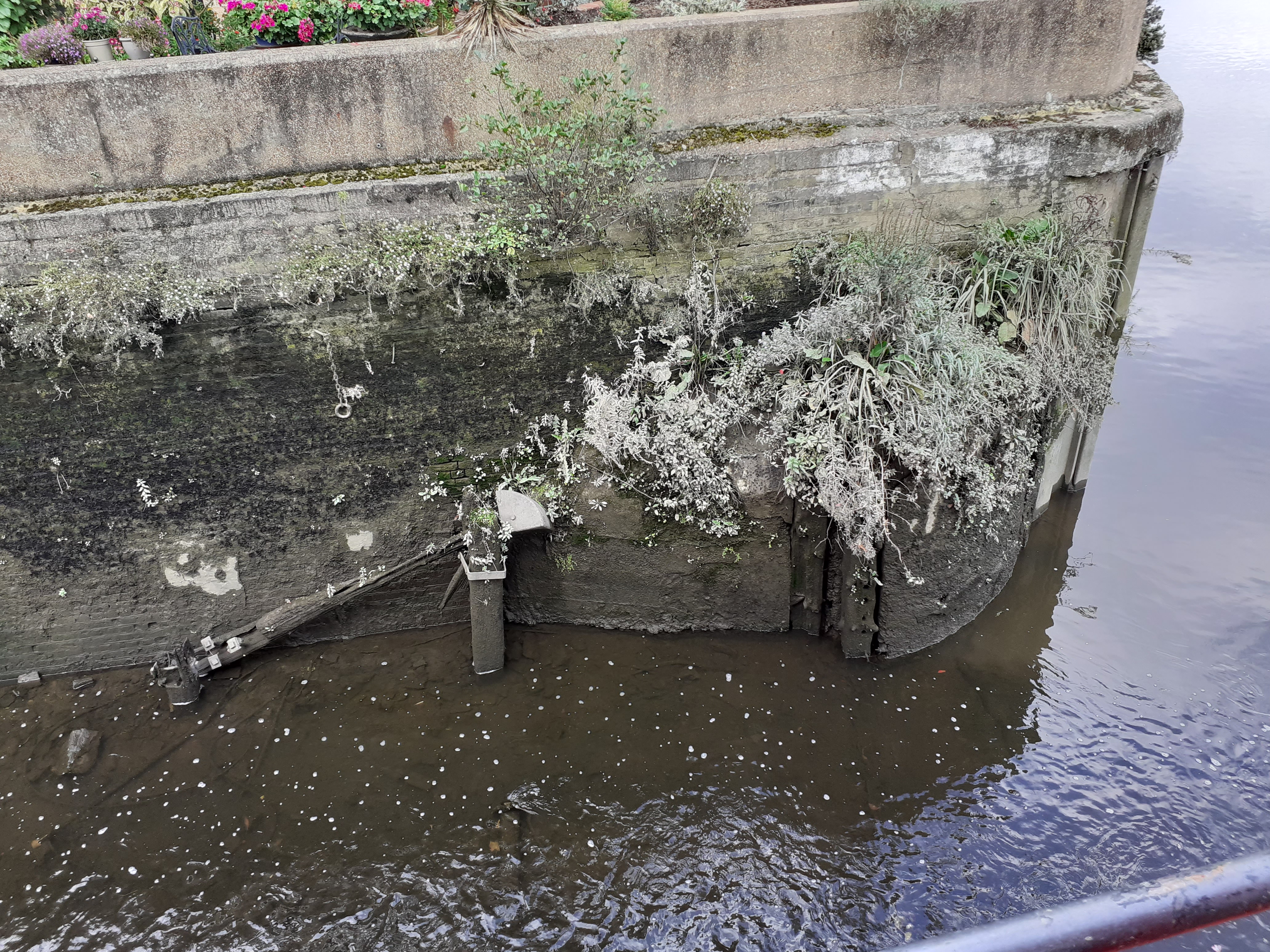
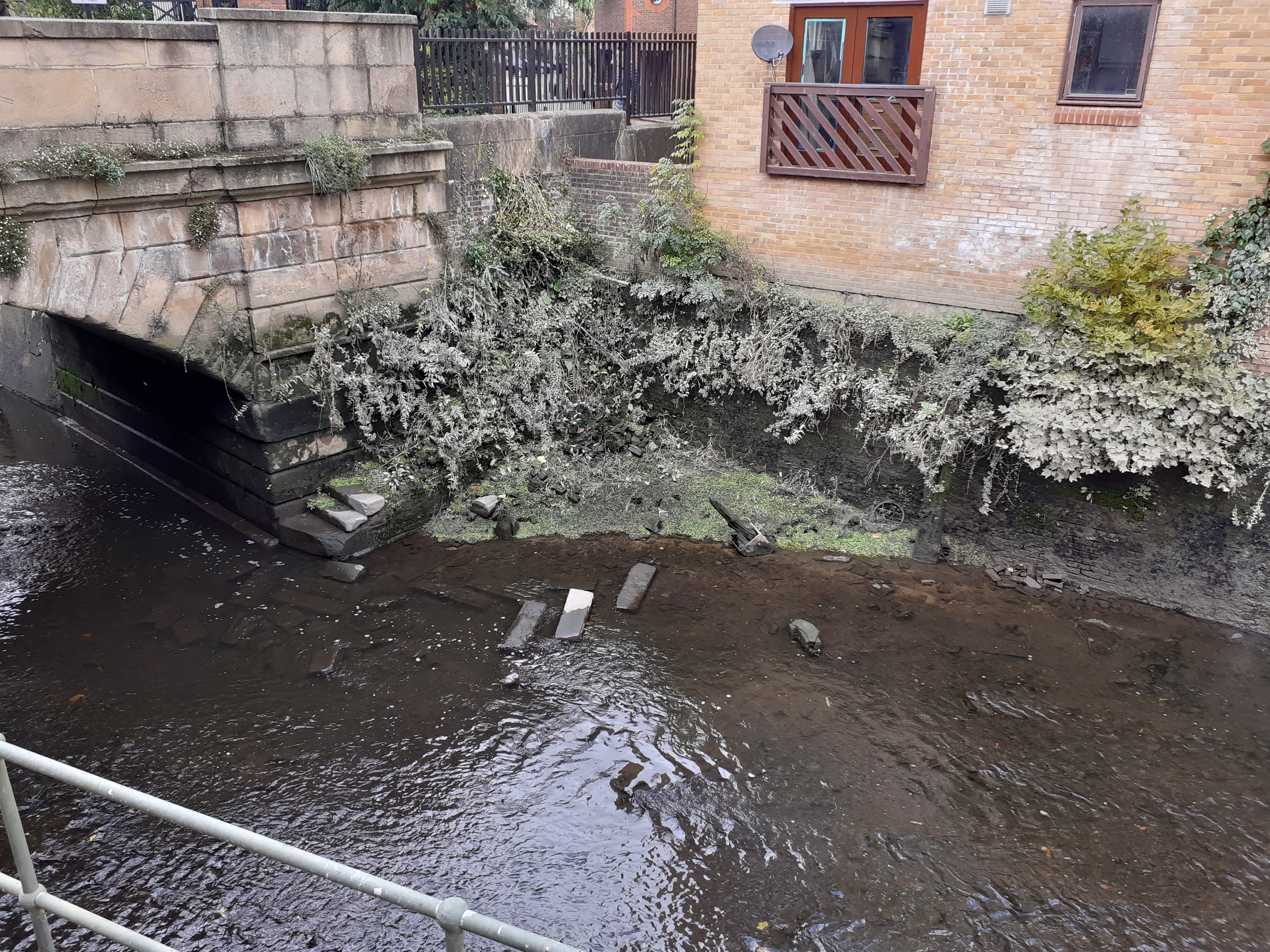
GLIAS on the airwaves — fifty years ago
In London's Industrial Archaeology No 17 I reviewed the early days of GLIAS, and mentioned our delight and surprise at winning first prize in the 1971 competition for IA groups and individuals run by the BBC2 'Chronicle' programme. This was one of the few examples of coverage of IA in its formative years by UK radio and television.
So it might be surprising that in 1974, half a century ago, GLIAS was involved in three TV and radio programmes! Admittedly, two were for Dutch and Belgian television (indicating a welcome Continental interest in IA in 'Blighty', but consequently never screened for UK viewers) and one was for BBC Radio London.
The Dutch programme was to be presented by Peter Brusse, London correspondent for national newspaper De Volkskrant, and filmed by Andrew Lee of Platypus Films, based in Bow Street Studios under Covent Garden's Floral Hall. Denis Smith and I, respectively then GLIAS Chairman and Publications Officer, were approached, and my diary records that on Thursday 18 April we met Peter and Andrew over dinner, and agreed a timetable. The production schedule was brisk! The Saturday, just two days later, found me in Southwark, where the photogenic if semi-derelict warehouses in Clink Street were filmed, with voice-over from yours truly. After lunch in the nearby Anchor pub, it was to Borough Market, St Katharine Docks, and the Markfield Road beam engine for more filming into the early evening, followed by a late, lengthy, and boozy bistro dinner near Peter's Kensington flat. (So this was what 'filmland' was like, thought I!) Two days later, Denis and I went from a GLIAS Committee meeting to the Platypus studio to be interviewed by Peter discussing London's IA, which provided further voice-over for scenes in the finished film. Three days later, Denis and I were at the studio again for a preview of the film, already edited and with our spoken contributions dubbed into Dutch. And that was it — all done and dusted inside a week...
The Belgian film project, two months later, was quite different in several ways, not least in its leisurely timescale (and presumably budget). Initial contact, with Denis, came via the Central Office of Information, the erstwhile UK Government's 'marketing and communications agency' according to Wikipedia, based in Hercules House in Lambeth. (The COI was closed down in 2011, and its re-purposed HQ has become the Park Plaza Hotel. Times change!). At a meeting there on Monday 24 June, Denis and I met the COI's Lavinia Warner (later a successful writer and producer, with television series such as Tenko to her credit), and the film's originator, Christian Huart from Radio-Télévision Belge, a French-speaking broadcaster.
Three days later I took a day off work, to meet Christian at his Kensington Gore hotel for a 'recce' of potential filming sites. Arriving, I noticed a large Daimler limousine parked outside, with driver. I was impressed (not to say gobsmacked!) when Christian guided me to this car, which apparently the COI had arranged to be provided for him — by the Foreign Office, no less. We looked at the Clarendon Buildings artisan dwellings block in Mayfair's Balderton Street, the Regent's Canal at Hampstead Road, King's Cross and St Pancras Stations, St Katharine Docks and Tower Bridge, before heading to what was then the fairly new ITN building in Wells Street, Fitzrovia (since demolished), in whose preview theatre we saw a screening of the Dutch film we had been involved with two months earlier. How that came about we knew not, but someone from the British Tourist Authority was at the screening, so I guess that UK tourism promotion was in mind — even for industrial archaeology, it seems! From there after a quick pub lunch it was eastward to Abbey Mills, Three Mills, and Markfield Road beam engine, where we met Denis Smith with the late Alan Spackman, in charge of restoring it.
In what was clearly a substantial reconnaissance ahead of filming to come, a week later I again accompanied Christian, this time to GLIAS member Adrian Tayler's East London home, leaving him to act as guide around IA sites in the Lea Valley. Three days later it was my turn to guide a lengthy tour of numerous South and West London sites, ending at Fulham Gasworks and Fulham Pottery.
Our final 'recce' was three weeks later on 26 July, this time also with Christian's producer Jacques, visiting their selection of sites for imminent filming, including on Sunday 4 August the Fulham Pottery, where I was interviewed about this important site that I had been involved in recording over the previous few years ahead of demolition.
A month later I received an appreciative letter from Lavinia Warner at the COI, thanking me for what she kindly described as 'excellent advice and hard work' that had benefitted the filming, which had apparently taken three weeks. The film was to be transmitted in Belgium in January 1975, but we never saw it...
Our third and last 1974 'media' event was in December. Again it was Denis Smith approached, this time by BBC Radio London producer Nick Lucy. This fairly-recently established local station was based in Hanover Square, and ran a fortnightly phone-in programme Platform, for local groups to represent their interests and respond to calls from listeners. One such body had pulled out at very short notice, and GLIAS having previously registered via Denis an interest in appearing was offered their 'slot' just a week ahead, which he accepted. (Denis already had some media experience, notably as the accordion player in the Morris-dancing episode in the film The Great St Trinian's Train Robbery — not a lot of GLIAS folk may know this! See picture below) To take part, he invited Christine Vialls, John Smith, Adrian Tayler and me as GLIAS members, along with Nicholas Falk, a pioneer in the re-use of redundant London industrial buildings through his URBED group. We duly presented ourselves at the studio in good time for the 8.30-10.00pm scheduling on Friday 13 December (this date an ill omen?).

On air, Nick Lucy introduced us, and Denis spoke about GLIAS and our aims and interests. After which calls were invited... and none came, none at all! So, as advised beforehand in such an event, we raised and discussed one topic after another between ourselves, somehow reaching the end of the programme without obvious 'hesitation, repetition, or deviation' for the better part of 90 minutes. Big sighs of relief. Nick Lucy was sympathetic, saying — perhaps truthfully — that this had happened before, and acknowledging that IA in London was not perhaps a subject to rouse passion and response in our radio audience. Regrettably, there had been insufficient time in those pre-email days to let the GLIAS membership at large know it was to be broadcast, which doubtless excluded some potential 'phoners-in'.
Somewhere in the relevant media archives those three programmes may survive, maybe not. This note will at least put them on record in print. Michael Bussell
The Quentin Blake Centre for Illustration now owns the engine house and associated nearby buildings at New River Head (GLIAS Newsletter September 2020). That charity plans to make the site into a combination of new galleries, learning spaces and gardens, with an anticipated opening to the public in early 2026.
They kindly held an 'open day' of the site on 18 July 2024, allowing access to the base of the one-time wind pump, the engine house (but not the top floor) and boiler house (below left). Part of the coal stores and cart sheds remains, and part has been rebuilt; no access. The engine house was adapted for other uses many years ago, with floors and a staircase added. Drawings showed stages of its enlargements. The only remnant seen of former use was part of a metal rung ladder set on the inside of the wall.
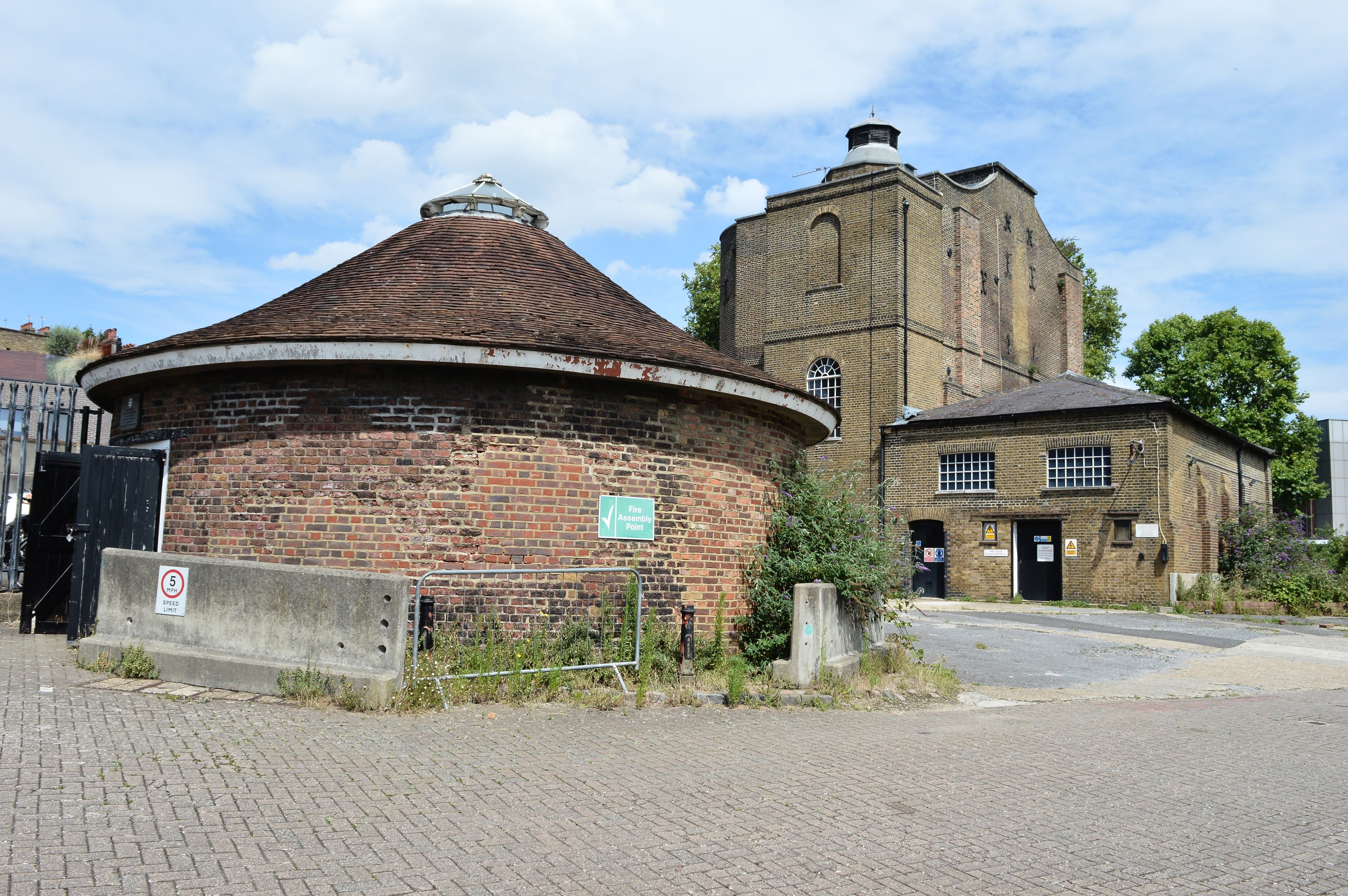

A short length of 12inch gauge railway track remains in the yard between the boiler house and coal stores (above right). The south side of the boiler house has iron 'straps' on the outside wall (below left). Proof of former ownership is a New River stopcock plate (below right). A few examples of the latter, but mostly smaller, survive in streets across the area served by the New River Company.

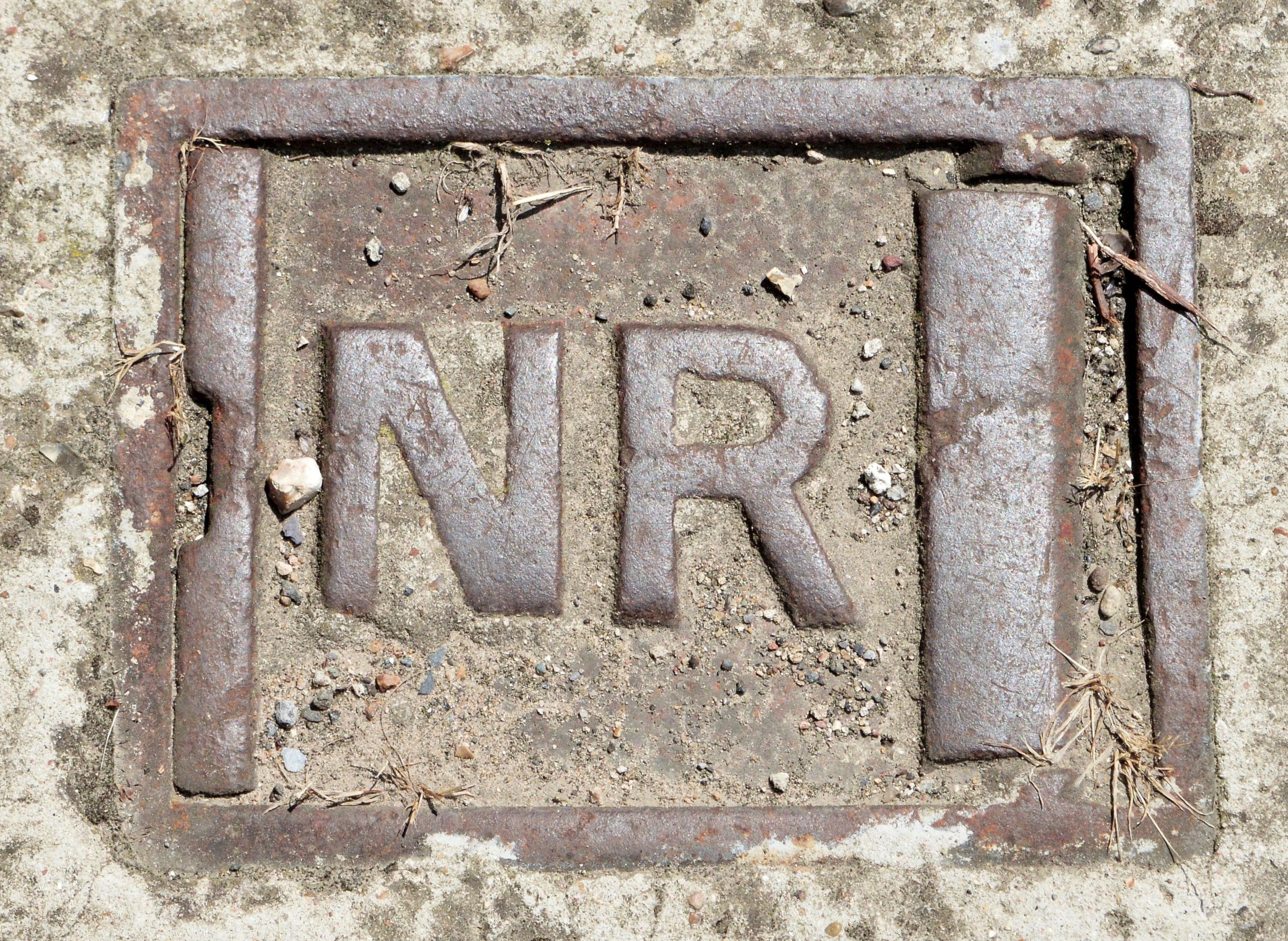
The accompanying photographs are shown by permission of the Charity. David Thomas
The New River pipe track, Finsbury Park Road
The recently built wall which appeared in GLIAS Newsletter August 2024 was being demolished on 8 October 2024. It no longer exists.
It was at the north end of Finsbury Park Road on the east side of the road and carried fresh New River Pipe Track plates.
The previous wall here was demolished to give Thames Water access to their 36 inch diameter water mains. These New River plates really mean what they say. Bob Carr
Many people will be familiar with Microsoft Word for word processing on a personal computer. When this software was introduced in 1983 it was quite primitive and in the early years of word processing on DOS machines people who wanted to write long and involved reports and do work of a technical nature did not find it sufficient and it was for this kind of use that C A Textor was introduced. It was popular with technical people for a considerable time and the version being described here dates from 1991. It was also popular in France and C A Textor lasted long enough for there to be a Windows version. A strong feature was its ability to automate repetitive tasks.
C A, which stands for Computer Associates, were in business from 1976 to 2018. Computer Associates originated from a Swiss software company and a New York data services company. C A grew to become one of the largest independent software corporations in the world. The company created systems software and for a time wrote applications software which ran on IBM mainframe computers as well as being involved in much else. Writing software for mainframes would have made clear the shortcomings of what was then available for this work.
C A Textor saves as you type and can automatically assign a folder upon saving. Then it can proof read your work making use of several glossaries and more than one dictionary simultaneously.
However, this short article is not about the C A software itself it is about packaging, the presentation of software has changed so much, which you will discover as you read on. This short article adopts a Robert Opie* approach.

The presentation of C A Textor 5.3 was of a really high standard, at the time this was clearly a luxury product. There was a box (see image 1) containing a handbook one cm thick, Up and Running, as well as a substantial Reference Manual 1.2 cm thick (see image 2). Both books had pages size 23 x 18 cm. In addition there was a reference card and so on. The software came on both eight 5.25 inch floppy disks (see image 3) and two 3.5 inch diskettes (see image 4).
C A Textor 5.3 could run on a Brother PN — 9000 GR, a portable computer made in Memphis, USA. This machine came with a 378 page handbook 2.3 cm thick with pages 23 x 19 cm (see image 5), and although this laptop was made in the USA and the handbook printed there, on the cover of the manual (which uses American spelling) it says UK Product. However, this is probably because there was a separate UK version. Bob Carr
-
* A well-known collector of packaging with an interest in social history — author of the Packaging Source Book 1989, ISBN 9780356176659.
New director at Weald and Downland
It may not be London but ...
Tilly Blyth, once Head of Collections and Principal Curator of the Science Museum and latterly Professor and Head of the School of Museum Studies at the University of Leicester, has been appointed as Director of the Weald and Downland Living Museum.
I have known Tilly through the co-operation of the Computer Conservation Society and the Science Museum and I wish her well in her new appointment. Dan Hayton
As the named contact I receive IA News, the AIA Newsletter, which in No 208 reports on the success of the London Museum of Water and Steam (Kew Bridge Museum to us oldies) reaching the target of their appeal for funds.
Being a national organisation there are articles from Northumberland to Sussex and I, from my own connections, noted a piece on the Magpie Mine, Derbyshire, along with the award of the King's Award for Voluntary Services to the team at Amberley Museum. Dan Hayton
I recently visited the Christ Church on Blackfriars Road to see the stained glass which, unusually for a place of worship, features scenes of everyday life from the surrounding area.
The original church was destroyed by bombing in the Second World War. When it was rebuilt in the late 1950s, a set of 10 windows was commissioned by Frederick Walter Cole and Kenneth Bunton for J Wippell and Co Ltd, 1960-61. These have been augmented by a further set by John Lawson in 1984 to celebrate the church's 25th anniversary.
I have created a Database entry for this, complete with pictures of the individual windows. See if you can spot Kirkaldy Testing Works, Bankside Power Station, a Routemaster bus, and various industries such as brewing, printing, and labouring. In the 25 years between the two commissions you can see just how much the industrial nature of the area has changed.
Better still, go and have a look for yourself, but check the opening times first. It is not open every day. Robert Mason
You too can add sites to the Database. To get involved, or to get logon details, please contact us at database@glias.org.uk
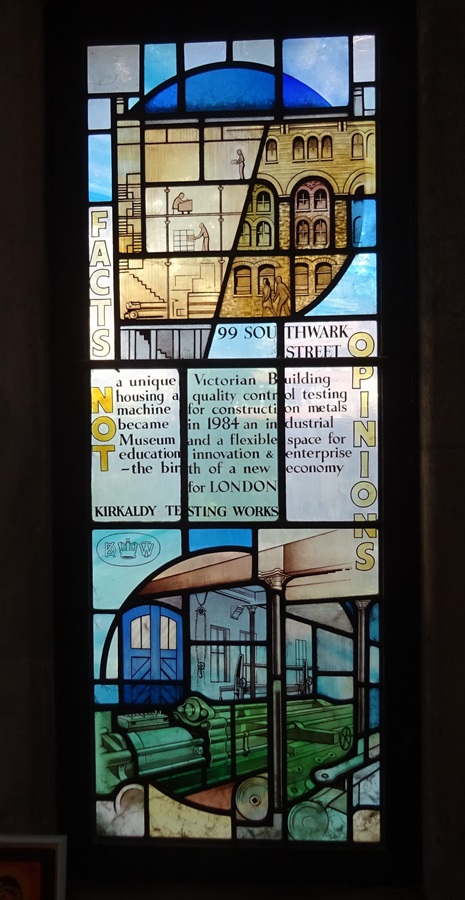

Further to our appeal for information on tram relics in London is the last newsletter (GLIAS Newsletter October 2024), we have received the following from trustees of the London County Council Tramways Trust (LCCTT).
Dave Jones writes: 'What I have seen regularly along the Edgware Road over the past 4-5 years during deep gas/water main excavations are regularly spaced short lengths of inverted tram rail as shown in the attached image taken here in Colindale in September 2020. Road reinforcement or tram track 'sleepers'?
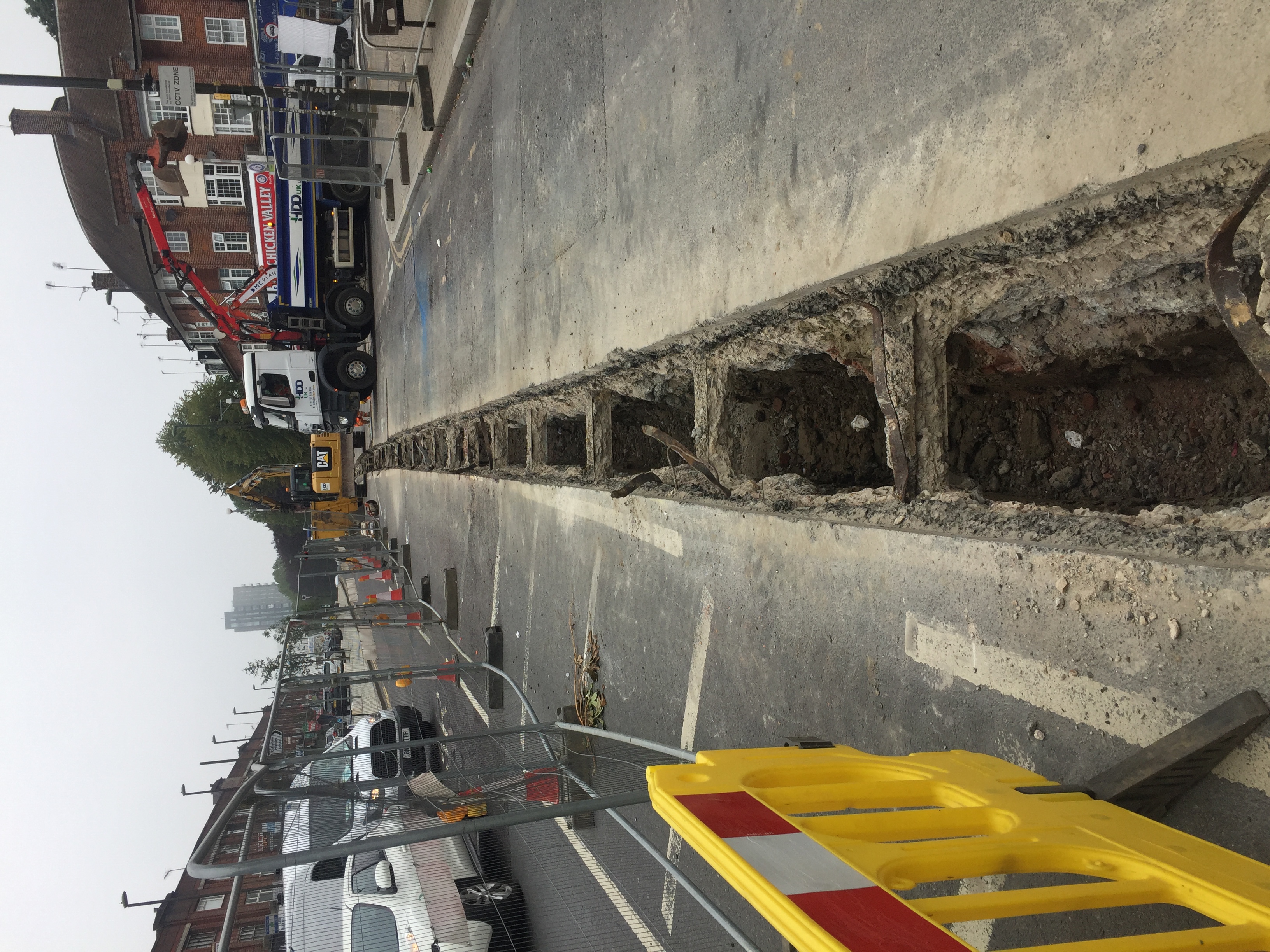



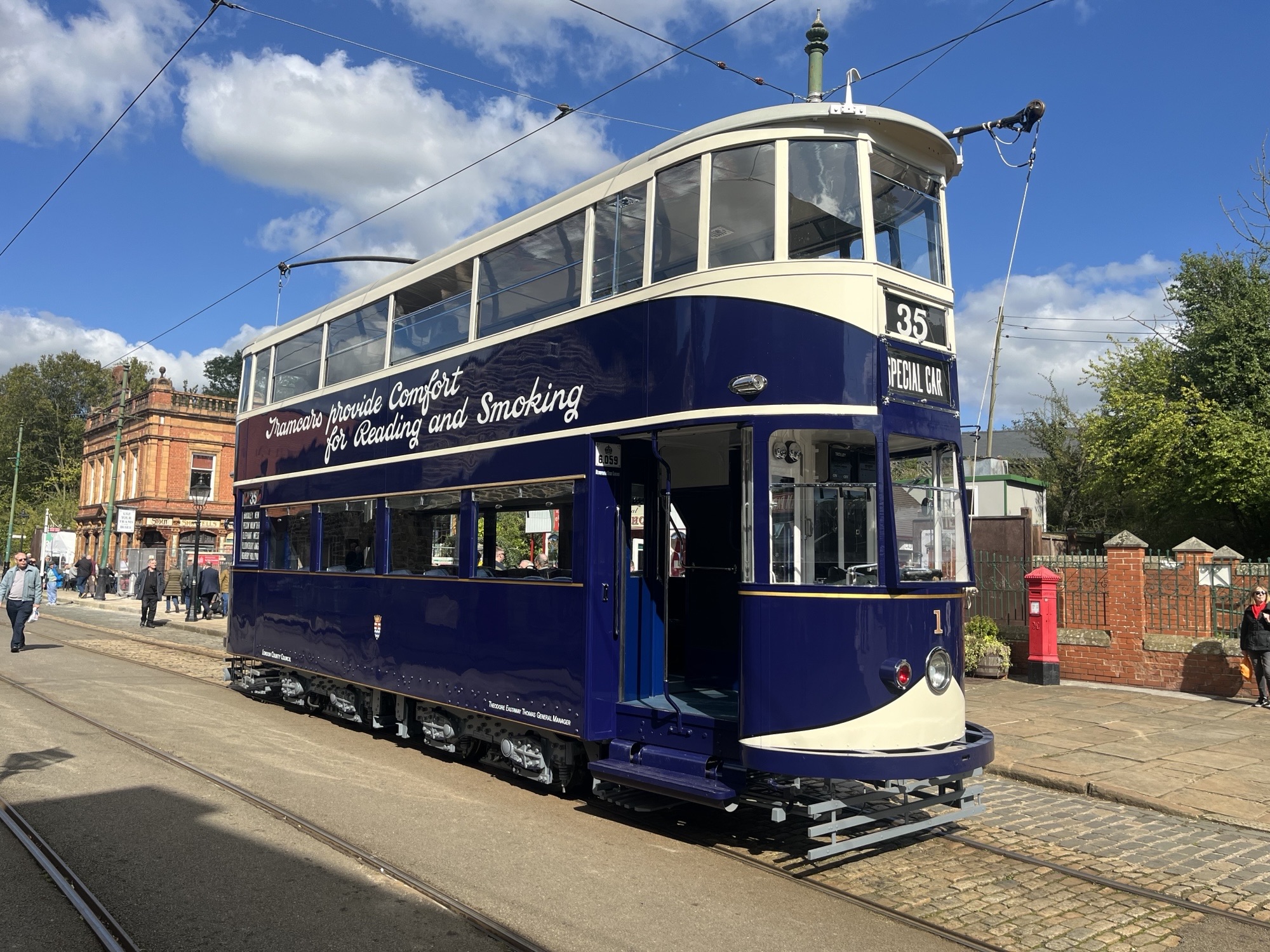
Andrew Simpson writes: 'Over the past 50 years or so the Trust has restored itself at its former workshop in Bethnal Green (and briefly in Ilford) and funded comprehensive rebuilds by staff at the Tramway Museum Crich of London tramcars (in restoration order) LCC106, LT1622, LUT 159 and most recently of course LCC1, with a couple more including a horse car lined up for the future.'
Those interested can follow LCCTT developments via Facebook: www.facebook.com/LCCTT
Signs and society — health and mortality
London as an overcrowded industrial city was sadly lacking in healthcare, hygiene and sanitation especially among the working classes. Mortality rates were very high, sicknesses abounded such as cholera, medical care was expensive, and there was much dependence on homemade potions, dubious 'cures', free hospitals and charitable health organisations. Public baths and washhouses were crowded. Alcoholism led to Temperance hospitals and loss of parents led to orphanages. Gradually, cholera outbreaks were understood and Bazalgette's sewerage systems improved the removal of noxious wastes. Even in the policing and control off the vast Empire death was all too present, be it suppressing the slave trade or in local wars with insurgents, as recorded by gravestones. The rituals following death were prominently advertised by undertakers everywhere, for business was plentiful. Local graveyards were full and several new large cemeteries were established in the then outer London. A special train service from Waterloo station to one of these indicated the level of demand. Sidney Ray
All photographs in Central London taken by the author over the past 50 years

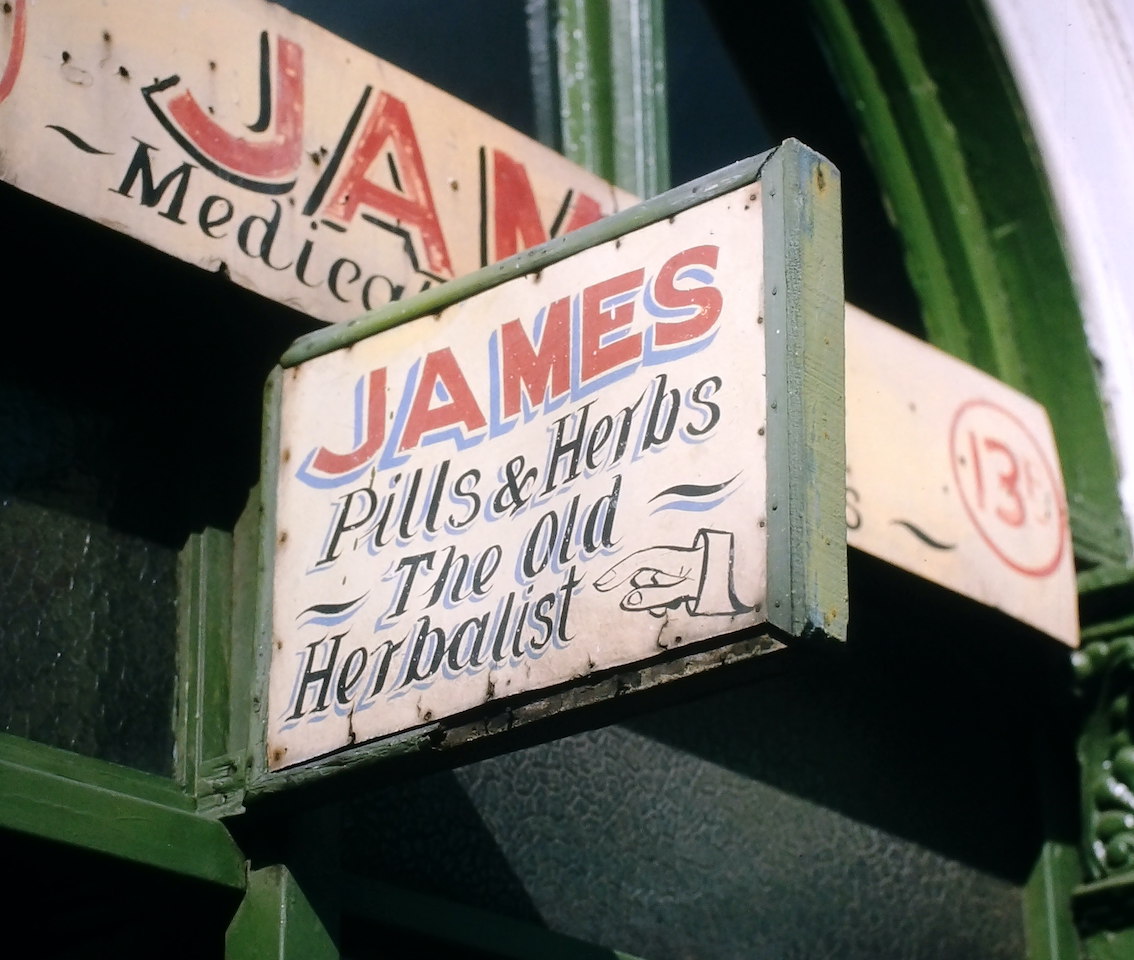



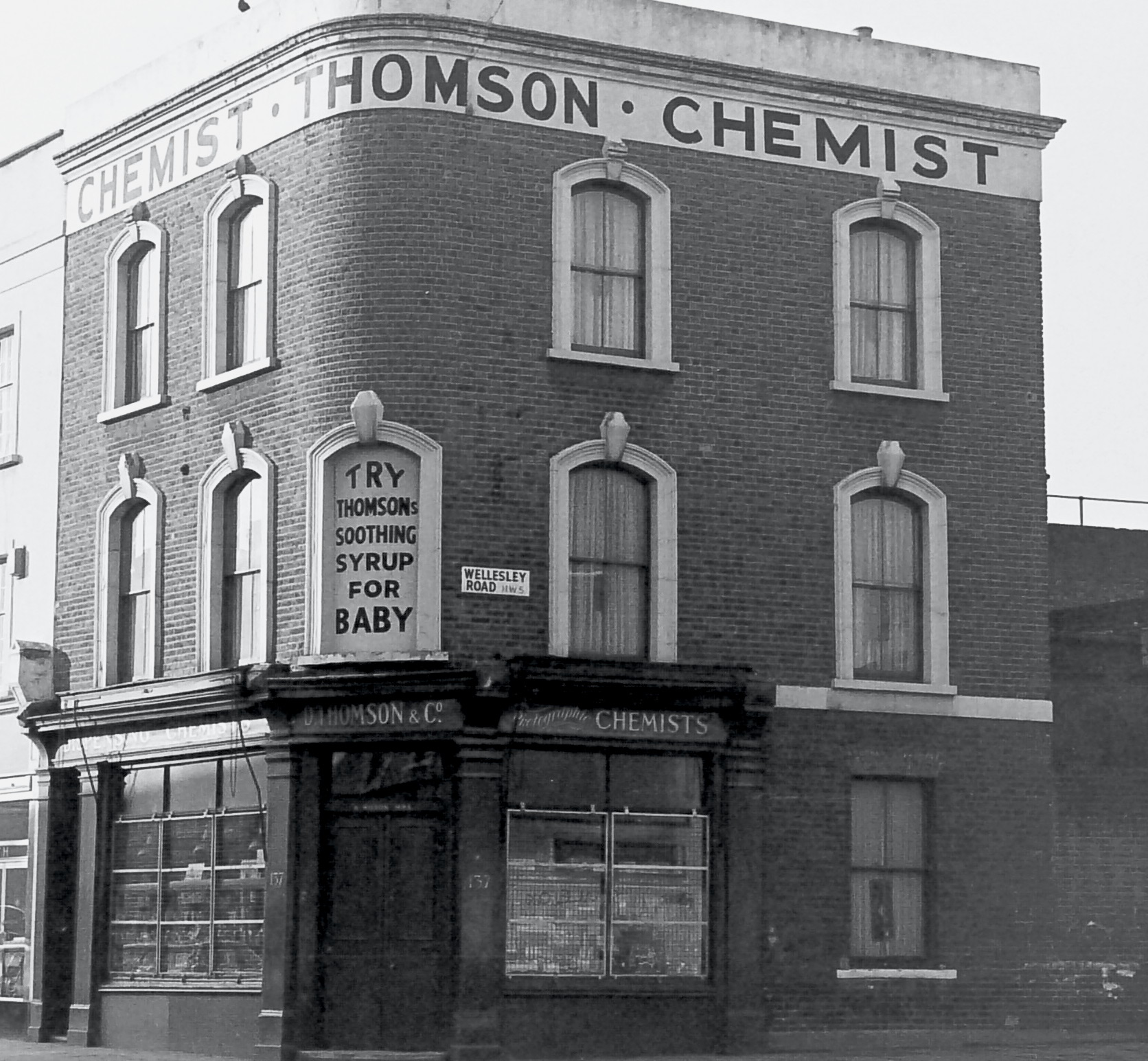






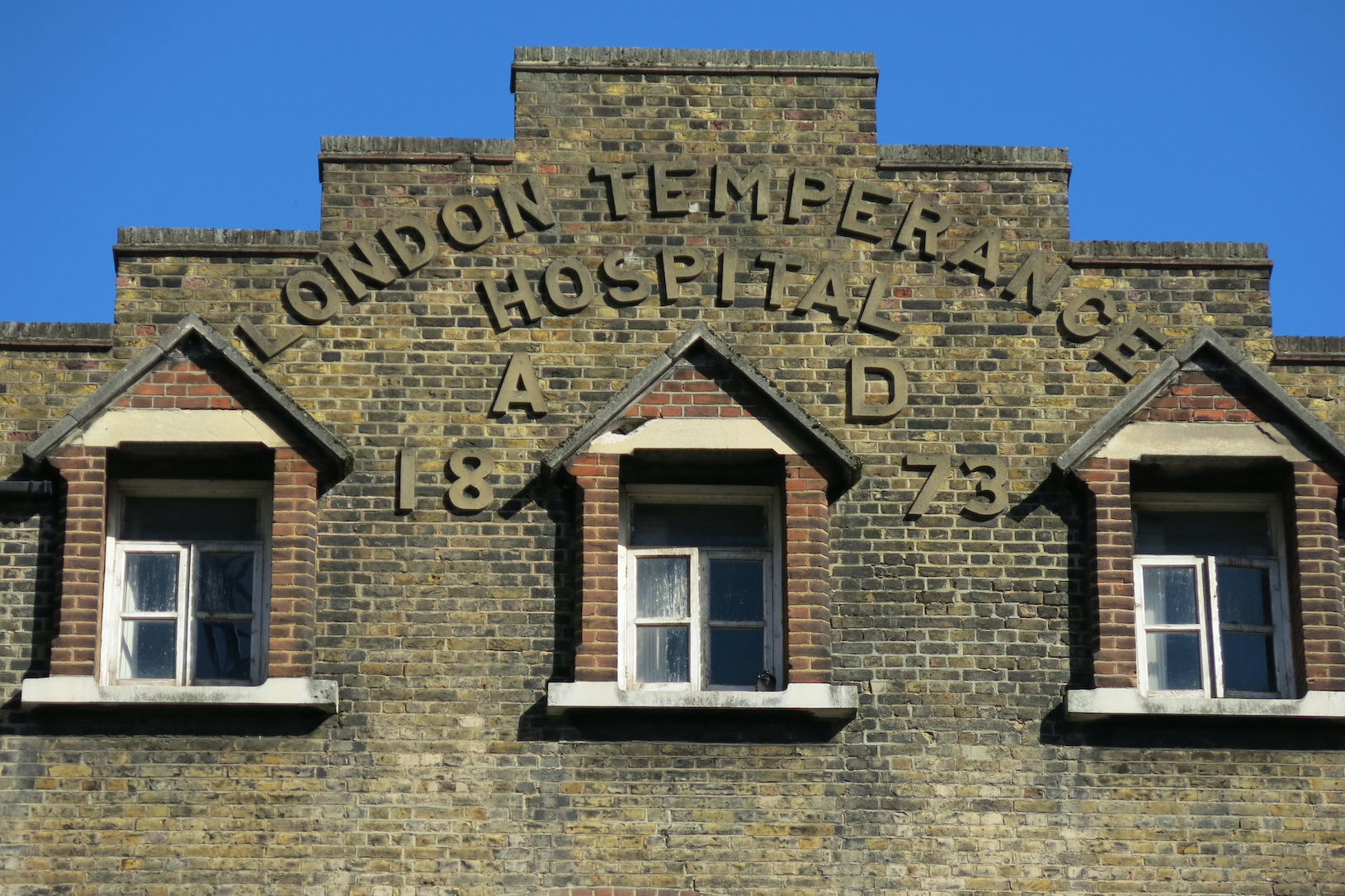


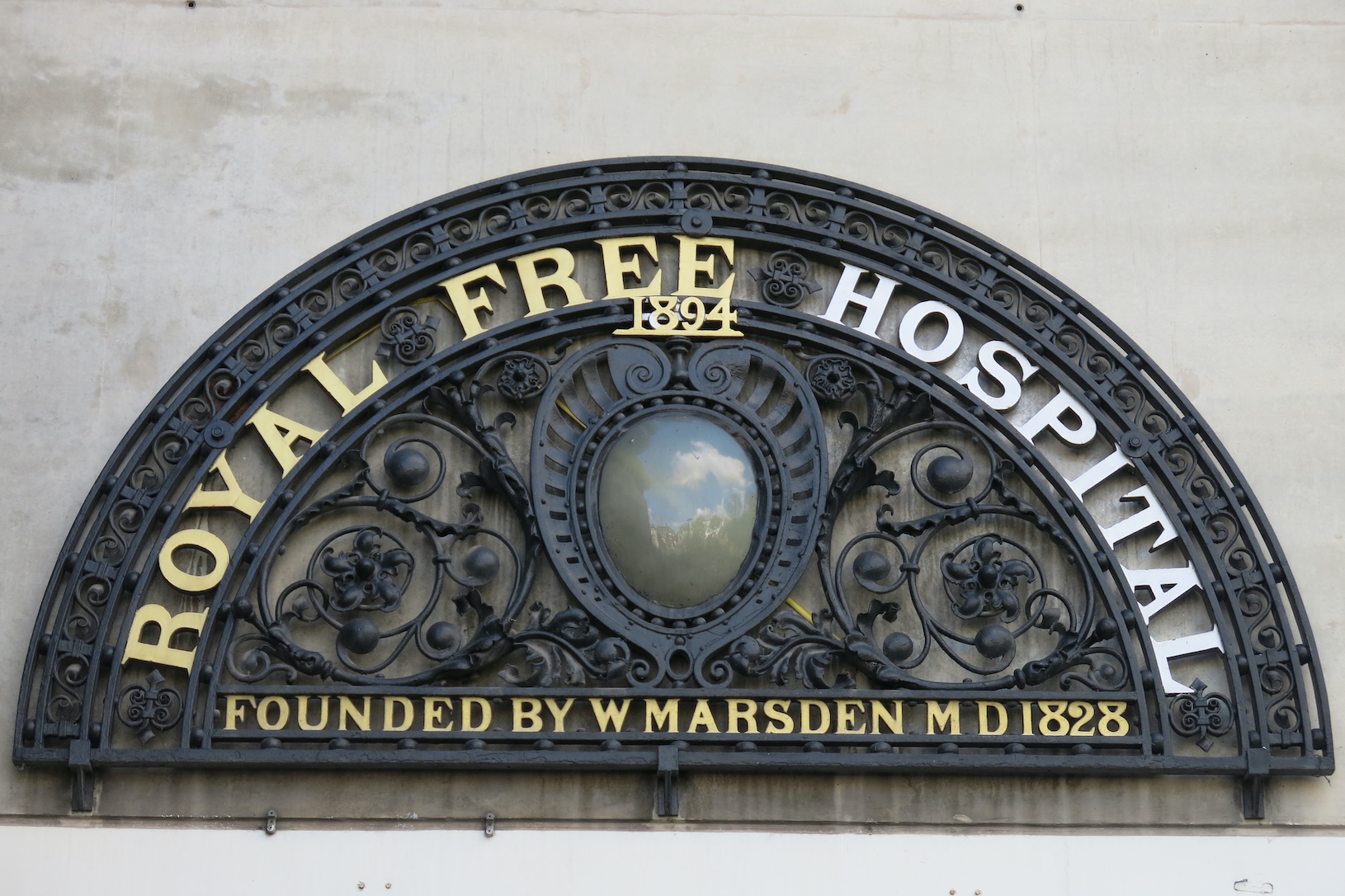





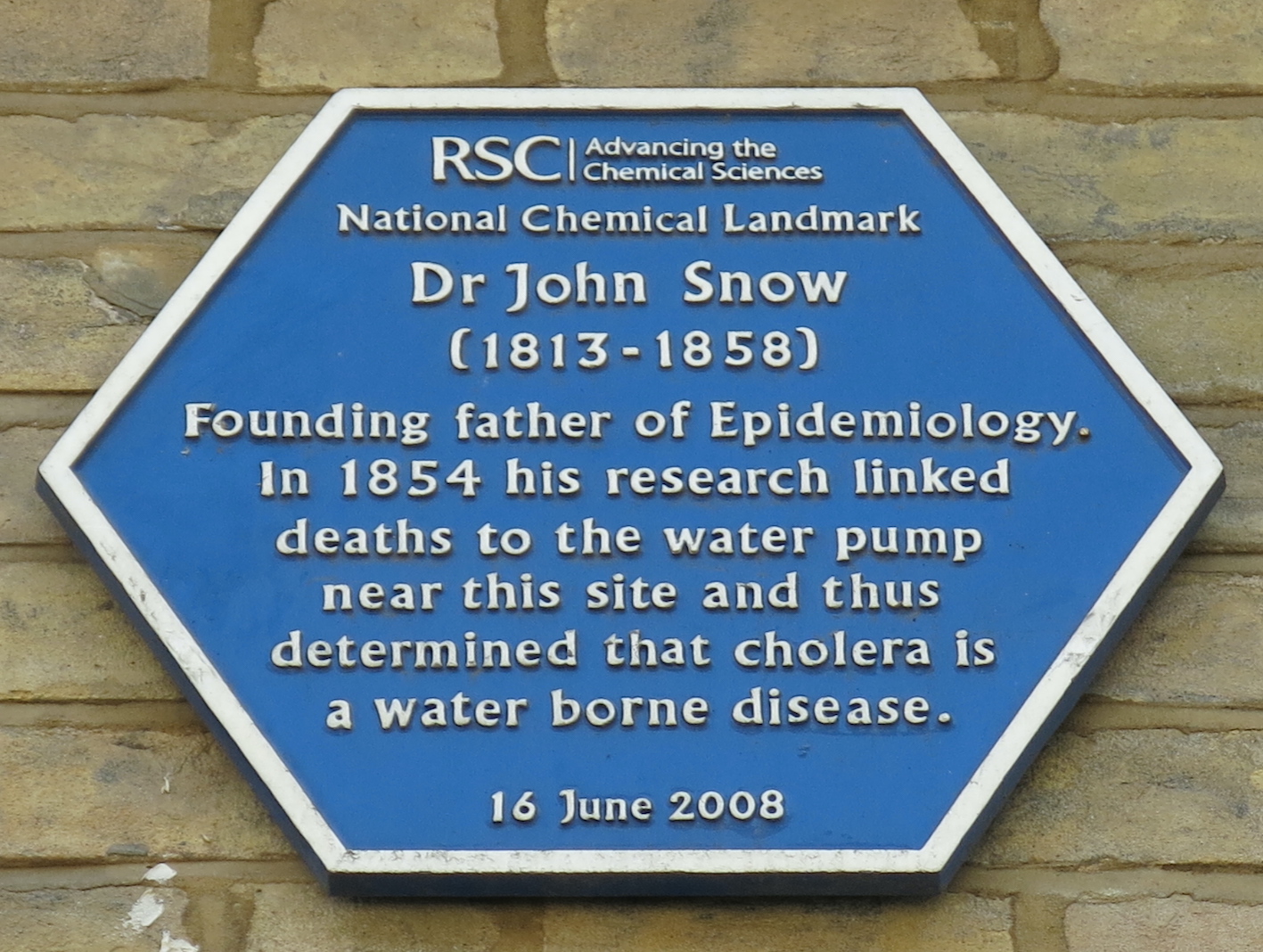
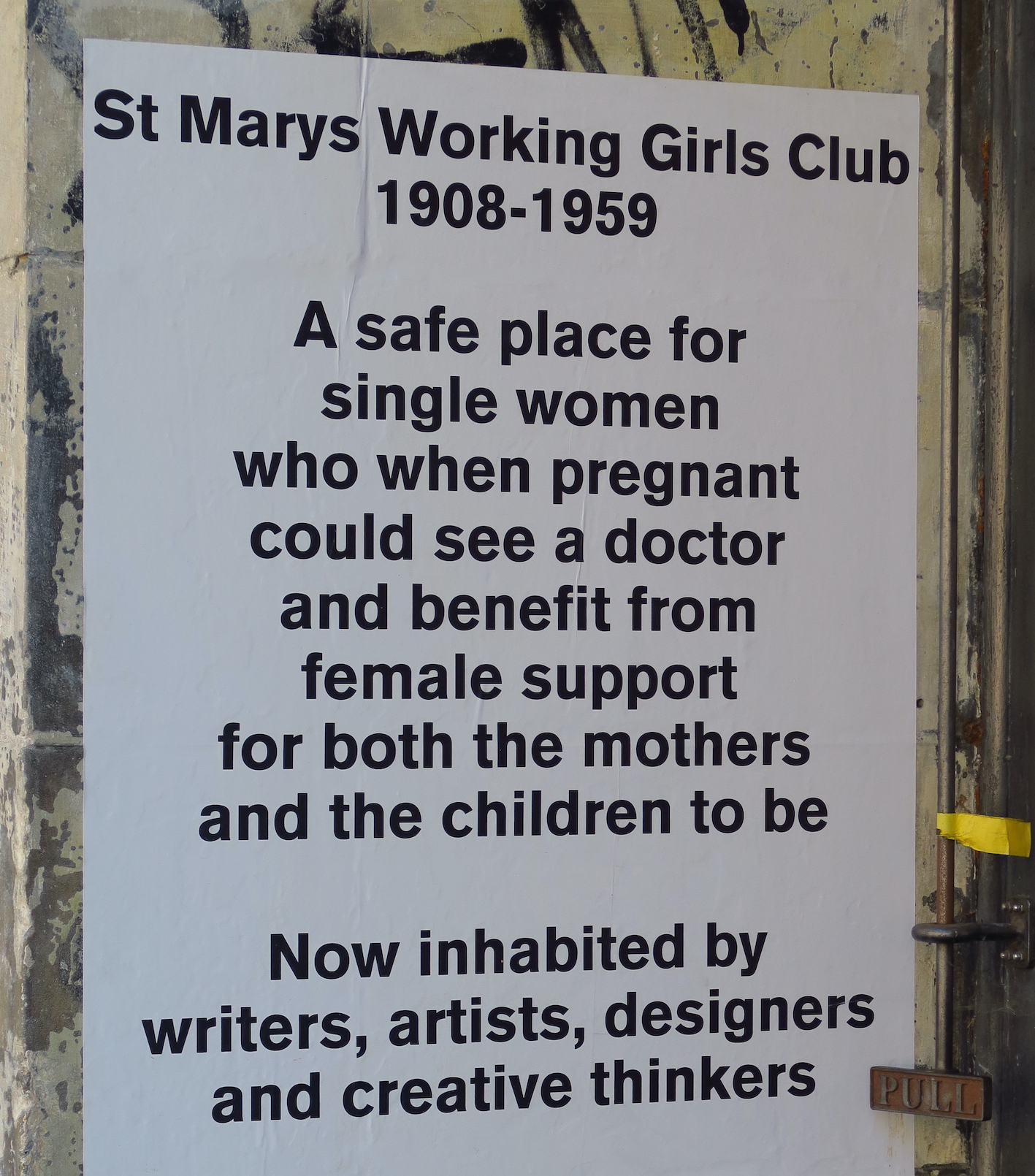
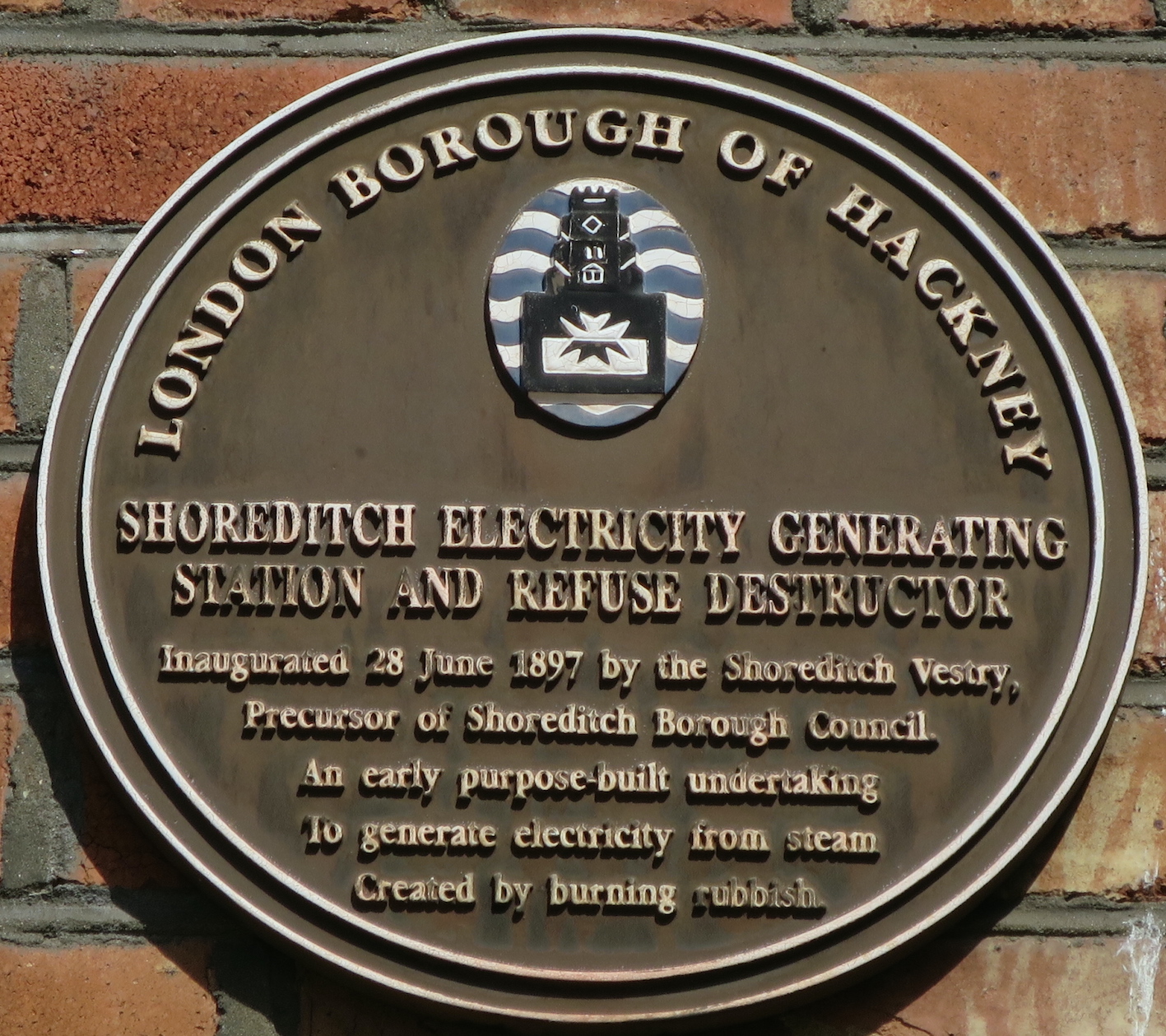
Next year marks the 200th anniversary of the opening of the Stockton & Darlington Railway. Expect a lot of events throughout the year to mark the birth of the modern railway.
Railway 200 is a partnership-led campaign which is co-ordinating these celebrations. They have a website where you can find out what is happening locally or nationally. And there is also information on how you can get involved yourself.
There are already events planned for the capital. The Epping Ongar Railway is planning a photographic exhibition entitled '200 Years of British Railway Locomotives'. There is a special excursion from King's Cross to the S&DR (part steam-hauled) on 4 October. Kensal Green Cemetery will be conducting a tour of its graves of railway engineers and promoters on 5 April and 9 August.
Web: www.railway200.co.uk
Uncertainty over markets' move
The proposed move of Smithfield Market and New Billingsgate Market to a purpose-built site in Dagenham (GLIAS Newsletter June 2019) appears to be off after the Corporation of London announced it was pulling out of the scheme.
In a statement the Corporation said: 'Project costs have risen due to a number of external factors, including inflation and the increasing cost of construction which have made the move unaffordable.'
Traders will be able to continue at their existing sites until at least 2028, but what happens thereafter remains uncertain.
The statement continued: 'The City Corporation is actively supporting traders to identify suitable new sites to ensure that they can continue their essential role in London's food supply chain and is in close dialogue with them and other wholesale markets about this already.'
Existing plans to create a new London Museum (formerly Museum of London) at West Smithfield also remain well under way and will not be impacted by this decision.
I am researching my ancestors from the Bermondsey area, who had a builders' business opposite Shad Thames called 'Talbot and Lugg'. I am the x2 great grandson of James Talbot (1817-1890), who was its founder. It seems that they were responsible for building several projects in that area, including Jamaica Wharf, and were apparently situated beside the Dockhead Stores public house.
I can't find any much information about them other than on your own web pages, so if anyone in your society has any information about this, it would be great to hear from them.
Simon Talbot. Email: dampflok@btinternet.com